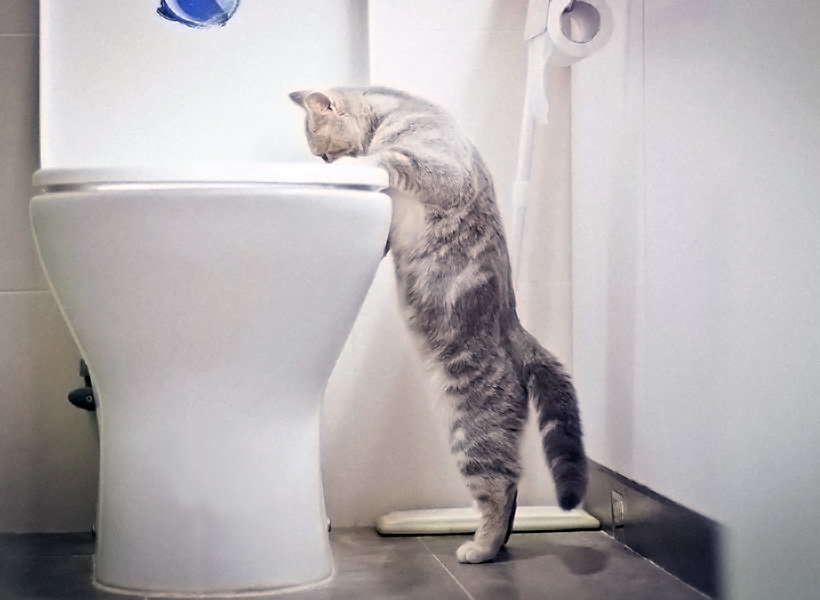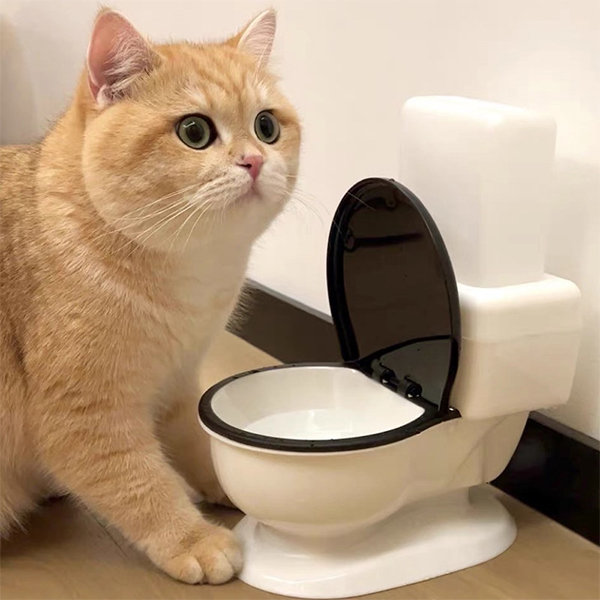Uncovering the Dangers of Flushing Animal Waste Down the Toilet
Uncovering the Dangers of Flushing Animal Waste Down the Toilet
Blog Article
Nearly everybody will have their own unique perception involving Should you flush animal waste down the toilet.

When it involves getting rid of waste, specifically animal waste, many people commonly turn to the hassle-free option of flushing it down the bathroom. Nevertheless, this apparently easy service can have major repercussions for the setting and public health. In this write-up, we'll discover why flushing pet waste down the commode is a negative concept and supply different approaches for appropriate disposal.
Intro
Appropriate waste disposal is essential for maintaining ecological sustainability and public health. While it may seem safe to purge animal waste down the commode, it can result in numerous problems, both for the atmosphere and human wellness.
Dangers of flushing pet waste
Ecological impact
Flushing pet waste introduces unsafe microorganisms and microorganisms into rivers, which can negatively influence water communities. These pathogens can pollute water sources and damage aquatic life, interrupting fragile communities.
Public health problems
Animal waste includes unsafe bacteria such as E. coli and Salmonella, which can pose major wellness threats to humans. Flushing animal waste down the bathroom can infect water products, leading to the spread of diseases and infections.
Alternatives to flushing
As opposed to purging pet waste down the bathroom, there are numerous different disposal techniques that are a lot more eco-friendly and hygienic.
Composting
Composting animal waste is an environment-friendly means to take care of it. By composting, raw material is get more info broken down into nutrient-rich soil, which can be made use of to feed yards and plants.
Garbage dump disposal
Getting rid of animal waste in a landfill is an additional choice. While not as environmentally friendly as composting, it is a more secure option to flushing, as it prevents the contamination of water resources.
Pet garbage disposal systems
There are specialized family pet waste disposal systems available that securely and hygienically deal with pet waste. These systems often utilize enzymes to break down waste and remove smells.
Steps to correct animal garbage disposal
To ensure correct disposal of animal waste, follow these actions:
Scooping and bagging waste
Consistently scoop and bag animal waste utilizing biodegradable bags. This avoids waste from polluting the atmosphere.
Utilizing assigned waste bins
Dispose of bagged pet waste in assigned waste containers, such as compost bins or garbage dump containers. Prevent flushing it down the toilet at all costs.
Cleansing litter boxes and animal areas routinely
Routinely tidy can and animal locations to avoid the buildup of waste and microorganisms. Use pet-safe cleaning items to preserve hygiene.
Advantages of correct disposal approaches
Embracing proper disposal approaches for animal waste supplies a number of advantages:
Decreased environmental pollution
Proper disposal approaches minimize the risk of environmental pollution, protecting rivers and communities from contamination
Decreased danger of water contamination.
By staying clear of flushing pet waste down the toilet, the danger of water contamination is significantly minimized, guarding public health.
Improved cleanliness and health
Proper disposal methods promote much better hygiene and health, developing a safer environment for both people and animals.
Final thought
Finally, purging pet waste down the bathroom is dangerous to the setting and public health. By taking on different disposal approaches and complying with appropriate waste administration techniques, we can minimize the negative impact of animal waste and contribute to a cleaner, healthier world.
What To Do With Dog Poo – The Do's And Don'ts Of Disposing Of Faeces
Dog poo bins
Some councils provide dedicated dog waste bins in popular dog-walking areas that can take dog poo that has been bagged but you can legally dispose of dog waste in any public litter bin, as long as it is securely bagged. This also applies to your wheelie bin at home.
Do not flush
Water companies do not recommend flushing dog faeces down the toilet because certain parasites can survive the water processing treatment and are potentially harmful to humans. You should also never consider flushing dog poo that has been bagged down the toilet as the bags will not break down and instead create severe blockages in the sewage system.
In the woods
The Forestry Commission promotes a ‘stick and flick’ method for dealing with waste in the woods. This means finding a stick and using it to flick any poo from off the path so that it is out of the way of other walkers. You could also bury it as long as it is not in an area where there might be livestock.
Livestock
Parasites found in dog poo can be transmitted to livestock if they inadvertently eat infected faeces that has been left on grazing land. This could result in the death of sheep or abortion in cattle so you should always make sure you pick up your dog’s waste in fields where livestock could be present.

Routinely tidy can and animal locations to avoid the buildup of waste and microorganisms. Use pet-safe cleaning items to preserve hygiene.
Advantages of correct disposal approaches
Embracing proper disposal approaches for animal waste supplies a number of advantages:
Decreased environmental pollution
Proper disposal approaches minimize the risk of environmental pollution, protecting rivers and communities from contamination
Decreased danger of water contamination.
By staying clear of flushing pet waste down the toilet, the danger of water contamination is significantly minimized, guarding public health.
Improved cleanliness and health
Proper disposal methods promote much better hygiene and health, developing a safer environment for both people and animals.
Final thought
Finally, purging pet waste down the bathroom is dangerous to the setting and public health. By taking on different disposal approaches and complying with appropriate waste administration techniques, we can minimize the negative impact of animal waste and contribute to a cleaner, healthier world.
What To Do With Dog Poo – The Do's And Don'ts Of Disposing Of Faeces
Dog poo bins
Some councils provide dedicated dog waste bins in popular dog-walking areas that can take dog poo that has been bagged but you can legally dispose of dog waste in any public litter bin, as long as it is securely bagged. This also applies to your wheelie bin at home.
Do not flush
Water companies do not recommend flushing dog faeces down the toilet because certain parasites can survive the water processing treatment and are potentially harmful to humans. You should also never consider flushing dog poo that has been bagged down the toilet as the bags will not break down and instead create severe blockages in the sewage system.
In the woods
The Forestry Commission promotes a ‘stick and flick’ method for dealing with waste in the woods. This means finding a stick and using it to flick any poo from off the path so that it is out of the way of other walkers. You could also bury it as long as it is not in an area where there might be livestock.
Livestock
Parasites found in dog poo can be transmitted to livestock if they inadvertently eat infected faeces that has been left on grazing land. This could result in the death of sheep or abortion in cattle so you should always make sure you pick up your dog’s waste in fields where livestock could be present.

We were shown that report about 10 Things You Should Never Flush Down The Toilet through a good friend on a different domain. Are you aware of another person who is sincerely interested in 4 Reasons Why Dog Poop Cleanup is Important? Do not hesitate to share it. Thanks a lot for being here. Return soon.
Schedule Now Report this page